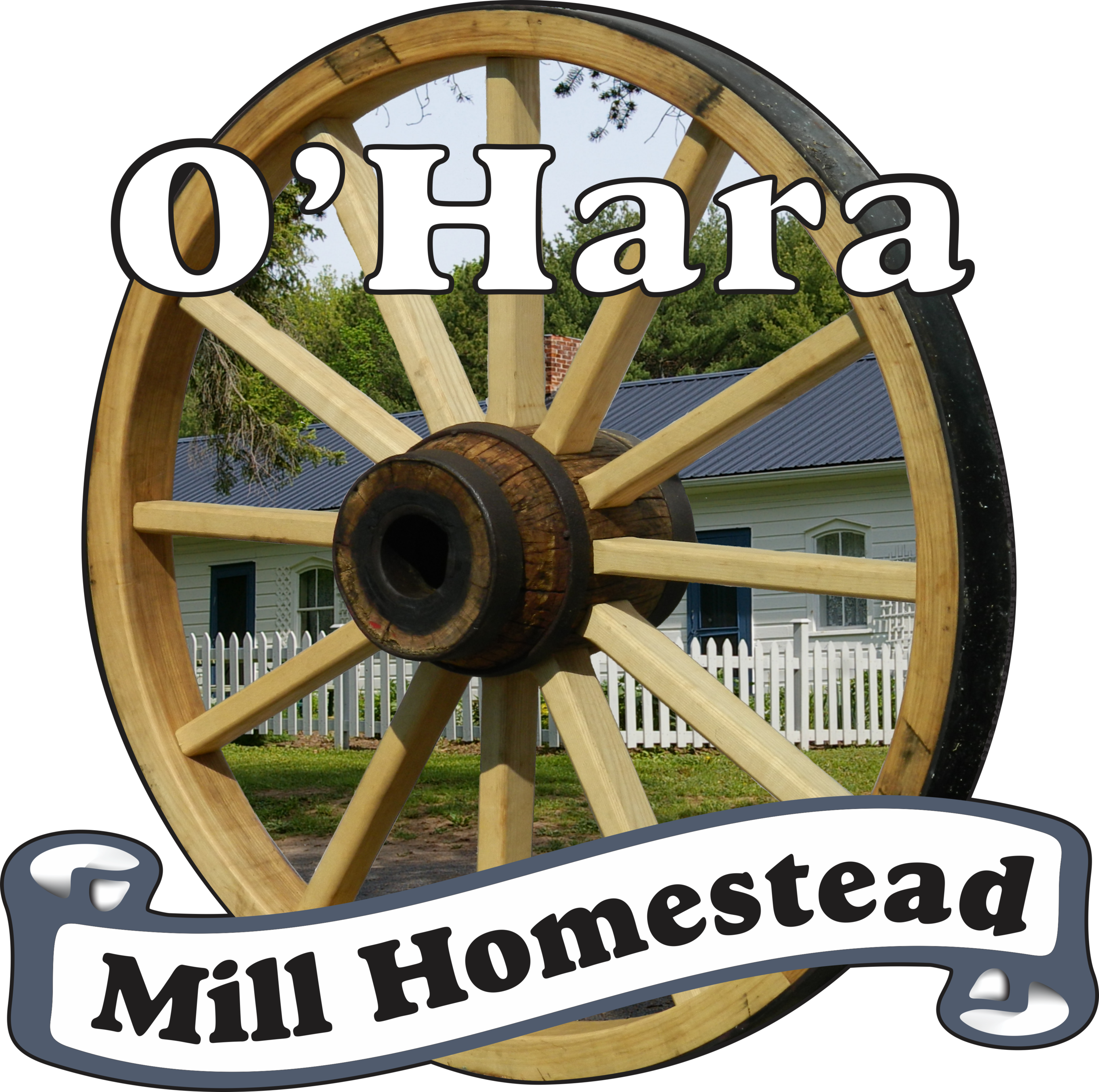Happily Ever After
Customs and Traditions/ August 4th, 2021
Marriage in the 1800s carried strong economic and social expectations and was not to be taken lightly. Many marriages started with a courtship, where two young people would learn about each other under the supervision of a chaperone. Many of the first settlers of Canada were couples from the United States that were seeking a new start for themselves and their families.
Meeting A Potential Partner
Minnie Ketcheson O’Hara’s wedding dress. White was not a very common colour until the 20th century.
When small communities began appearing in Canada, families became close with one another as it ensured survival through the winter. Partnership most often came from the children of two families that frequently assisted with each others farms. Once communities started coming together and populating land closer to one another, older children would meet potential partners at school, church, or while assisting neighbours with their harvest.
Social activities and organized events were not popular until the 1870s, as “fun” was the least of the settler’s concerns. As survival became easier, and less of a worry, people actively began seeking ways to come together as a community that didn’t involve labour. These events were hotspots for courtships to develop. Even though entertainment was more widely sought after, there were still strict rules and etiquette put in place. Madoc in particular experienced a crossing between the “sophisticated city way” and the more “relaxed country way” of entertainment. Regular etiquette stated that no lady would appear in public without gloves, and no gentleman without a calling card. Ladies were also expected to refrain from using profane expressions. In the country, bees and socials combined business with pleasure so these formalities were not as often expected. Socials provided a golden opportunity for a young man to approach a lady he admired from afar.
Auction socials were very popular in Madoc in the late 1870s. Ladies would wear concealing masks and gowns and would be auctioned off to the highest bidder. The lady would be required to accept all the attention of the buyer for the evening. Oftentimes courtships would sprout from these evenings of excitement.
In the 1890s, “Clothespin” socials were the event of interest in Madoc. Each lady would attend the social with a doll bearing a dress made of the same fabric as a ribbon the lady would wear around her wrist. The ladies would drop their doll and the gentlemen would pick them up. When they did so, they would seek out the lady with the matching ribbon and take her into dinner.
Oyster dinners were also very popular as they were public ceremonies and celebrations. May 24th was a day of excitement and ceremony. Attractions would include: a gala procession of local brass bands, political personalities, the village fire engine, sports clubs, and many others. Any social events that occurred provided the opportunity for young people to meet potential partners that they may not get to interact with regularly.
Courtship
Courtship was the beginning of a special friendship for a young couple. Dating was not as casual as it is today, in the 1800s the stakes were high as courtship lead to a permanent relationship that brought two families together. Courtship was also important because of the seriousness of a couple's commitment to each other, a “failed” marriage was socially and religiously frowned upon. Courtship provided the opportunity for a couple to be sure they were right for each other.
There were many rules of courtship. Chaperones were almost always required as it ensured that the young couple acted appropriately with each other. Gift exchanges were common during courtship and were most often small and personal. There are many documented cases of ladies giving their suitor a song or poem they wrote. If a gift was large in value, monetary or symbolic, permission would need to be asked of the receiver's family.
In European countries, “walking out” was a momentous occasion. Walking out was the first time a couple appeared in public on their own. This walk was public enough that a chaperone was not required and it allowed the couple to have emotional intimacy and get to know one another better. The absence of a chaperone symbolized that they were in fact a couple and close to engagement.
Weddings
Pictured above is a giant noisemaker
Weddings were the talk of the town as it meant the beginnings of a new family. Many people were invited to the weddings of the 1800s as it meant that you valued the approval of your community. After the wedding, there would be a dinner or party to celebrate the newlyweds. At the end of it all, a crowd would follow the couple home and bang pots and use noisemakers outside their window. Check out our blog post from last year about noisemakers to learn more.
Before churches were built in communities, clergymen would be sent from the church into outlying settlements to perform marriage ceremonies. For couples that were out of reach of the clergyman’s travels, they would write their names down into the family bible in order for their relationship, and commitment to each other, to be recognized by God. This allowed them to have children without being formally married, as it was considered a sin to be physically intimate before marriage.
Be sure to watch out for the rest of our posts this week as we’re going to talk more about practices within the church and wedding ceremonies.
𝓗𝓮𝓪𝓽𝓱𝓮𝓻 & 𝓜𝓲𝓪


